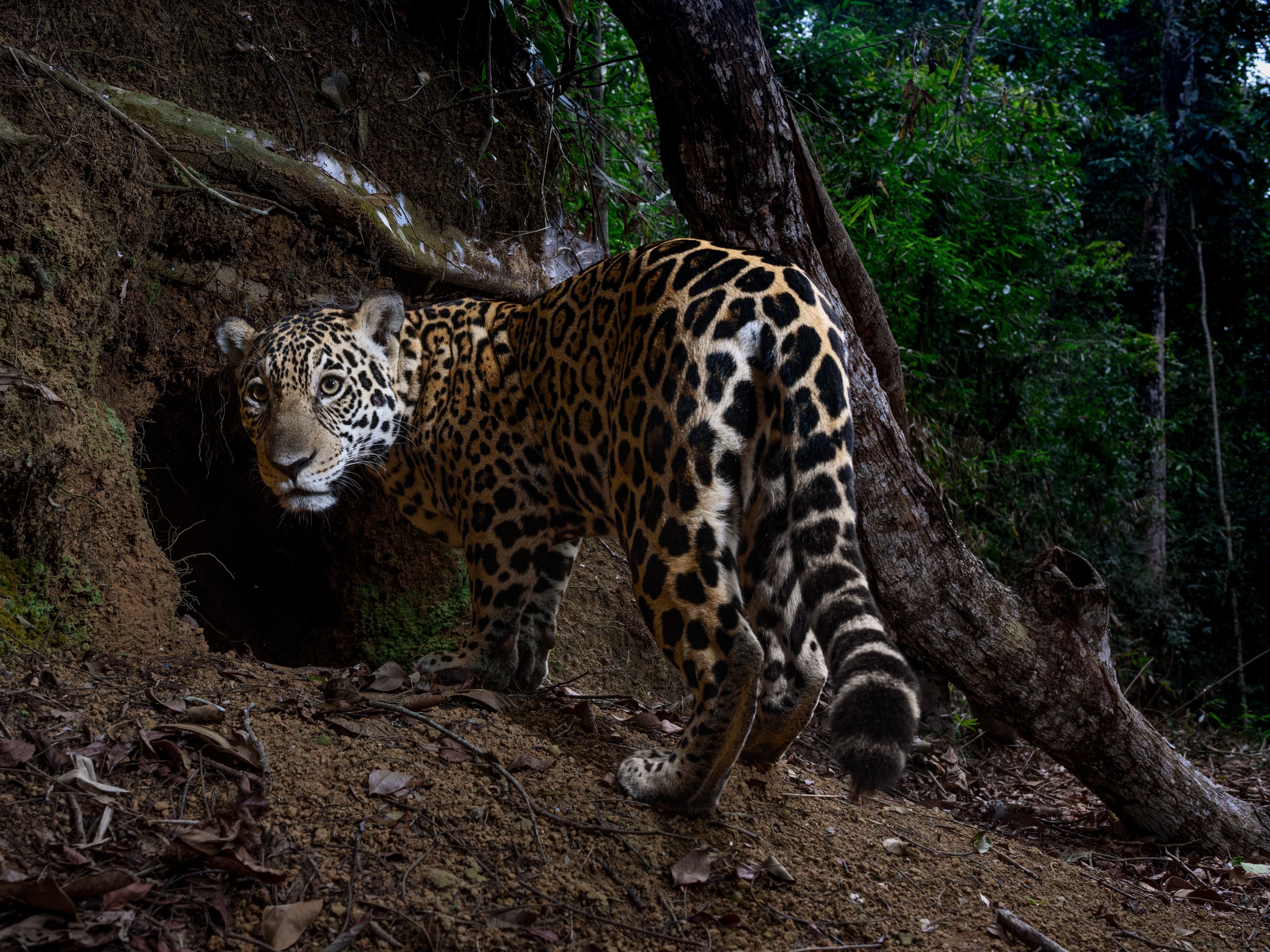
Shark-like Tails Sped Ancient Sea Monsters Through Oceans
A new study finds that mosasaurs were not as slow as scholars once thought.
Sea monsters lying in wait for unsuspecting prey sounds scary enough. But slap on a tail that let them run down their dinner—much like today's great white sharks—and mosasaurs could truly be considered one of the ancient world's nightmares.
And that's exactly what a new study published September 10 in Nature Communications has confirmed.
A 72-million-year-old fossil specimen of Prognathodon—a genus of mosasaur—found in a Jordanian quarry in 2008 revealed fin-like soft-tissue imprints along its tail. Those imprints demonstrate that this group of ancient sea monsters possessed powerful tails similar to ones seen on sharks today, rather than the puny ones on eels or sea snakes.
Mosasaurs were aquatic reptiles that prowled the seas and freshwater streams toward the end of the age of dinosaurs, about 98 to 66 million years ago. (Related: "Freshwater Mosasaur Stirs Marine Reptile Relationships.")
Although they are fairly well represented in the fossil record, finding soft-tissue evidence for shark-like tails on these lizard ancestors isn't something that study co-author Michael Polcyn, a vertebrate paleontologist at Southern Methodist University in Dallas, Texas, expected to come across in his lifetime.
This fossil is so well preserved that researchers can discern the direction of stiffening fibers in the tail, he added.
"You can [also] see the outlines of scales," said study co-author Johan Lindgren, a vertebrate paleontologist at Lund University in Sweden.
Questioning the Past
For over 200 years, scholars thought mosasaurs sported paddle-shaped tails much like sea snakes, said Lindgren. Since mosasaurs are true lizards, scholars formerly thought that the ancient reptile's tail should look like those on their living lizard relatives.
But this limited mosasaurs—some of which could grow to over 33 feet (10 meters) long—to short bursts of speed typical of ambush predators.
"It was generally assumed that their swimming speeds were low and at best they could do a quick lunge," said Bruce Young, a researcher at the Kirksville College of Osteopathic Medicine in Missouri who is studying how reptiles move.
The re-thinking of mosasaur tail structure suggests a much more active, high-speed swimmer, added Young, who was not involved in the study. "Could these animals be swimming down their prey? It really opens up a new way of interpreting these animals."
'Amazing' Confirmation
Scientists have questioned the prevailing view that mosasaurs had stick-straight tails for the past decade or so, said Young.
But researchers were hampered by the fact that their predictions of what a mosasaur tail looked like were based on studies of fossilized bone, he explained.
Comparing fossil mosasaur tail bones with shark tail structures led some scientists to conclude that these ancient lizards must have had lobed tails, said Polcyn.
Mosasaurs and sharks are about the same size, and researchers consider the sharks to be the closest living model for mosasaurs, said Young. Mosasaurs are more closely related, evolutionarily, to monitor lizards than they are to sharks.
Getting a fossil mosasaur with an imprint of the surrounding soft tissue is a fantastic find, Young said. "It's amazing confirmation" of what researchers have been predicting for a decade.
Ancient Heritage
At about six feet (two meters) long, researchers think the Prognathodon specimen is a juvenile. Adults in this genus can get to about 33 feet (10 meters) long.
In 2008, workers at a quarry near Amman, Jordan (map), split open one of the limestone boulders they collect to make tiles and found the mosasaur specimen inside, said Lindgren.
They called study co-author Hani Kaddumi at the Eternal River Museum of Natural History in Amman, who came out to retrieve the fossil.
Described in a 2009 paper, the specimen remained among the museum's collections until Lindgren visited in 2011.
Unfortunately, since the site rests on land owned by the quarry company, "we have to rely on the workers to find more fossils," said Lindgren.
"There are other specimens that have been collected that do contain soft tissue [traces], but not to the degree in the [Prognathodon] specimen," he added.
The vertebrate paleontologist assumes that most of the specimens workers uncover find their way onto the open market. "It's only a fraction that end up in museums," Lindgren said.
He hopes that Jordanian authorities can be convinced of the uniqueness of these finds so that more specimens can be recognized and saved. Lindgren would like to help build up the collections at the Eternal River Museum.
Raising public awareness about fossils isn't easy in Jordan, which is heavily affected by refugees and the strife in next-door Syria. But Lindgren says that means making people aware of the natural history in their midst is more important than ever. (Related: "Pictures: Syrian Cultural Sites Damaged by Conflict.")
The researcher realizes the difficulty inherent in this, what with Syria so close by. "[But] my intention is to be able to get the Jordanian people aware that this is part of their heritage," Lindgren said.
Follow Jane J. Lee on Twitter.





